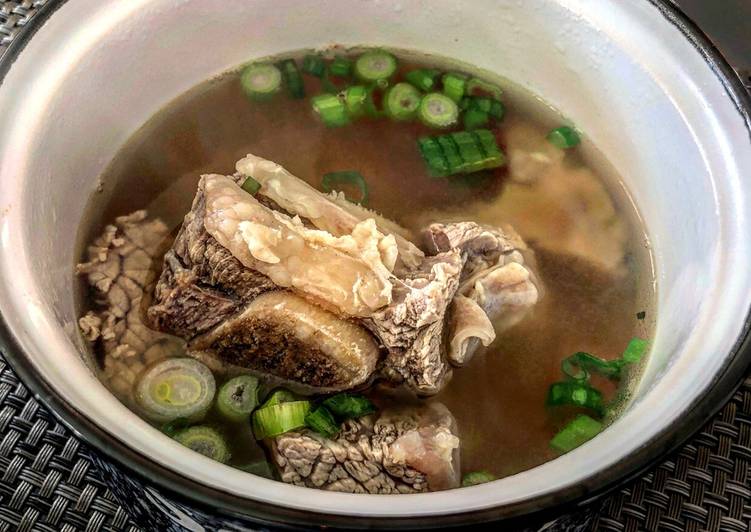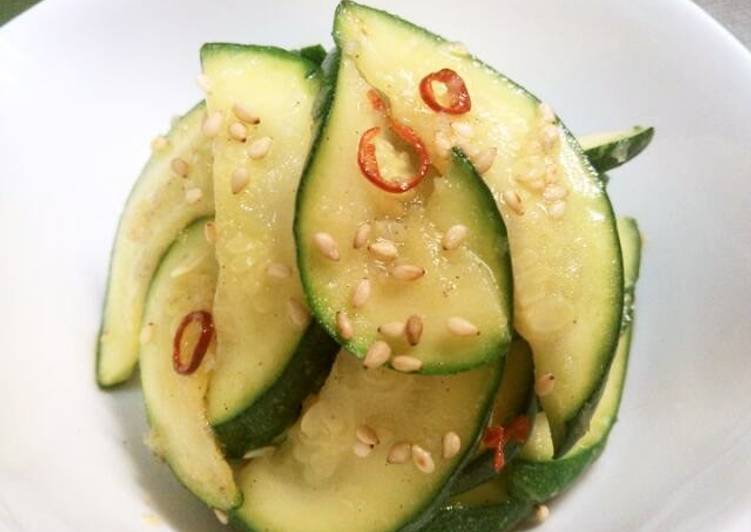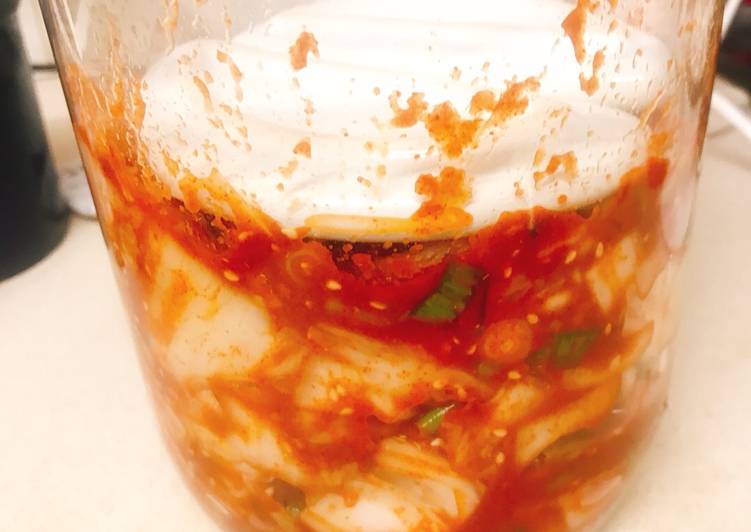
Hey everyone, it is John, welcome to my recipe site. Today, we’re going to prepare a distinctive dish, galbitang - korean beef short rib soup. One of my favorites. This time, I am going to make it a little bit tasty. This will be really delicious.
Galbitang is usually serve with bowl of rice, kimchi and side of chopped green onion, salt and pepper. Galbitang or galbi-tang (갈비탕) is Korean soup made with beef short ribs. Beef short ribs, daikon radish, eggs, garlic, green onion, ground black pepper, korean radish, onion, starch noodles.
Galbitang - Korean Beef Short Rib Soup is one of the most popular of current trending meals in the world. It is enjoyed by millions daily. It’s easy, it’s fast, it tastes yummy. Galbitang - Korean Beef Short Rib Soup is something which I’ve loved my entire life. They are fine and they look wonderful.
To get started with this particular recipe, we must first prepare a few components. You can have galbitang - korean beef short rib soup using 12 ingredients and 6 steps. Here is how you can achieve that.
The ingredients needed to make Galbitang - Korean Beef Short Rib Soup:
- Take beef short ribs, membranes removed
- Take onion, cut into large chunks
- Make ready Korean radish, peeled (am not using it cos I can’t find it in my local asian shop)
- Make ready spring onions, white part
- Prepare garlic cloves, peeled
- Make ready whole black peppers
- Prepare water
- Take Seasonings :
- Take light soy sauce
- Prepare minced garlic
- Prepare sea salt or more to taste
- Get Ground black pepper
We made another slow-simmering beef soup last night called galbitang, which includes beef short ribs, Korean radish (mu), and glass noodles (dangmyun). Galbi means rib and tang means soup- so it means rib soup?! lol In Korea, beef is used be very expensive (I believe it still is) and this Galbitang is very very special meal back then. My mom used to make with other cut of beef as well, since Galbi is one of the most. Open the lid, and discard of all the ingredients except for the Korean radish and the ribs.
Steps to make Galbitang - Korean Beef Short Rib Soup:
- Soak the beef ribs in cold water for 20 mins. Change the water a few times during this time. This is to draw out the red liquid (which looks like blood) from the meat and also to rinse out any bone fragments.
- In a large pot of boiling water (enough fo fully cover the ribs), boil the ribs for 10 minutes over medium heat. Drain the water and rinse the ribs in cold water. Cut off any obvious excess fat from the ribs.
- Place them in a large clean pot. Add onions, spring onions, garlic, black peppers and water (10 cups) into the pot and bring them to boil over medium high heat, covered. Once boiling, reduce the heat to medium low and simmer for 1.5 hours.
- Gently take out the beef ribs from the broth and set them aside. Strain the remaining ingredients over another clean pot. Discard all the strained vegetables while keeping the broth. Remove the fat.
- Season the beef ribs with the seasoning ingredients and gently place them into the pot. Bring the pot to boil over medium high heat for about 10 minutes.
- Serve the soup with cooked rice and kimchi.
Transfer the radish on to a cutting board and cut into bite size pieces. Galbi Tang (Korean Beef Short Rib Soup) - one of my favorite Korean soups! Made by simmering beef short ribs, daikon or Korean radish, garlic, scallions and other flavorful ingredients together in one pot - Galbi Tang requires a bit of time but. Galbi-tang (갈비탕, –湯) or short rib soup is a variety of guk, or Korean soup, made primarily from beef short ribs along with stewing beef, radish, onions, and other ingredients. Galbitang, or Korean short rib soup, is a traditional, hearty meal fit for royalty.
So that is going to wrap it up for this exceptional food galbitang - korean beef short rib soup recipe. Thanks so much for reading. I’m confident that you can make this at home. There’s gonna be interesting food at home recipes coming up. Remember to bookmark this page in your browser, and share it to your loved ones, colleague and friends. Thank you for reading. Go on get cooking!


